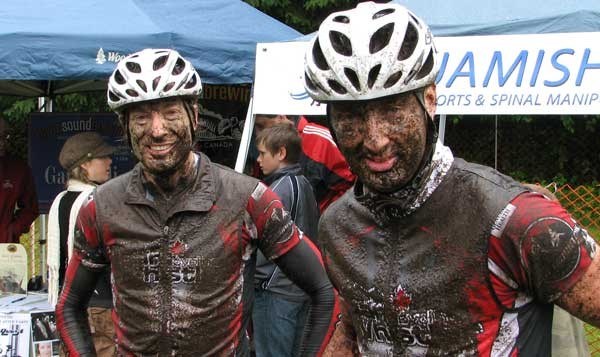By Andrew Mitchell
The official count of Test of Metal spectators and volunteers to be diagnosed with a gastro-intestinal infection stood at 24 as of Tuesday, July 3, but the actual number of people sickened during the race could be as high as 200.
According to Dr. Paul Martiquet, medical health officer for Vancouver Coastal Health, the race organizers have heard of many more people who became ill after last month’s race.
“The race organizers have anecdotally come up with a number of 200 out of 800 racers becoming sick, so that’s a fair amount,” said Dr. Martiquet. “There have been one or two reports of people so sick they were basically glued to their beds and washrooms for several days, while others only experienced mild symptoms. Some were prescribed antibiotics and some got better on their own.
“It appears to be very much an individual thing. Fortunately we’re looking at a fairly healthy population, in good physical shape. This type of outbreak would be a very different, far more serious thing in a nursing home, or among a less healthy population.”
The infection has been identified as Campylobacter, which is a common cause of diarrhea in B.C. and around the world. Symptoms can include diarrhea, nausea, stomach pain, fever, and vomiting, lasting anywhere from two to seven days. In some cases people can be infected and show no symptoms, or have those symptoms show up later.
According to Dr. Martiquet it’s rare to have outbreaks where multiple cases are reported.
Nobody knows what the source of the infection is. Vancouver Coastal Health has sent out a survey to all race participants and volunteers, and have already collected about 250 responses — including people who did not get sick or show any symptoms. By the end of the week they are hoping to have a few hundred more responses that will help doctors determine the cause of the outbreak.
So far there doesn’t seem to be any common denominator in the case, other than the mud. It rained heavily the night before the June 16 race, and on and off during the event itself. Most competitors arrived at the finish line coated in mud.
“Some drank their own water the whole way and some drank the water that was provided, some ate at the barbecue and some didn’t, some had fruit and some didn’t… (backpack hydration systems) were generally helpful because the drinking tube is right near your mouth and further from the mud, but that said some people who had Camelbacks still got sick,” said Martiquet.
“Keeping clean was hard to do. If you’ve seen pictures of people at the finish line, the mud was everywhere and would have been hard to get around.”
According to Martiquet, the prime suspect is either horse manure or bear feces on the bike trails, although they may never know the exact cause of the outbreak.
“It could be the presence of horse manure or bear pooh or whatever, getting into people’s faces and onto their water bottles and into their mouths, or we could be wrong. It might be something else that comes to us, or we might never figure it out.”
Anyone who took part in the race is asked to fill out a survey at http://surveys.vch.ca , whether they were ill or not. The answers will be used to help the investigators determine the cause of the outbreak, and to take steps to prevent outbreaks at similar events in the future.
Close to 850 people took part in this year’s Test of Metal, which is a 67 km mountain bike race through Squamish. Interest in the race is high, with the 2007 event selling out in just 48 minutes.




